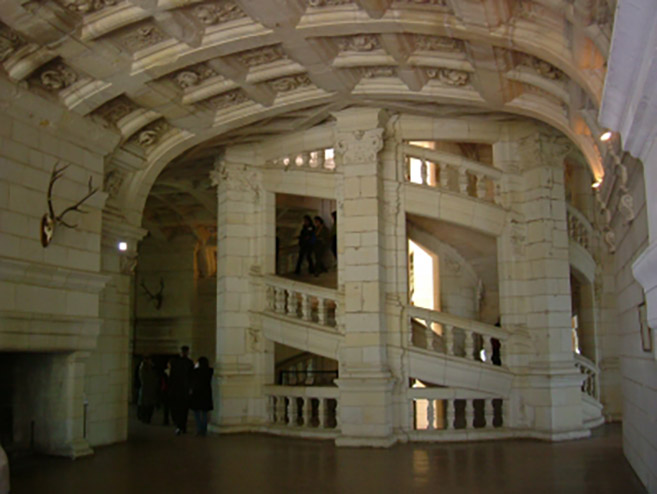Leonardo, Staircase, Château de Chambord, 1516
Leonardo suggested that the immaterial forces in the cosmos,
invisible in themselves, appear in the material things they set in motion. What
he had observed in the swirling of water and eddying of air, in the shape of a
mountain boulder and in the growth of plants, now assumed gigantic shape in
cloud formations and rainstorms. He depicted the framework of the world as
splitting asunder, but even in its destruction there occurs—as the monstrously "beautiful" forms of the unleashed elements show — the self-same laws of order,
harmony, and proportion that presided at the world’s creation. These rules
govern the life and death of every created thing in nature. Without any
precedent, these "visions" are the last and most original expressions of
Leonardo’s art—an art in which his perception based on saper vedere seems
to have come to fruition.”
Leonardo da Vinci’s home, the Château du Clos Lucé, is connected by a secret tunnel to the royal Château d’Amboise, just 1,600 feet (500m) away. The spectacular Château d’Amboise is just one of 300 châteaux in the Loire Valley region — with the grandest of all being the Château de Chambord. The Château de Chambord lies 32 miles (55km) east of da Vinci’s Château du Clos Lucé residence, and although it’s not within walking distance like the Château d’Amboise, experts believe the Château de Chambord holds one of da Vinci’s masterworks of engineering and design — a double helix “DNA” staircase.
More spirals ... HERE.









































































































































































No comments:
Post a Comment